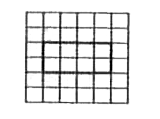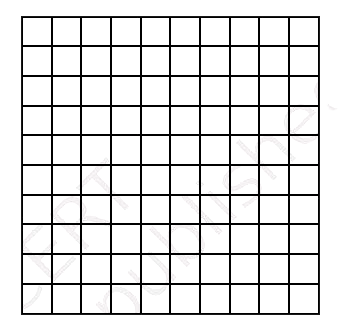Concerning radiation grids: a. A parallel grid is focused at infinity b. For a focused grid the focusing range depends on the grid ratio c. In the case of a crossed grid composed of two linear grids the resulting grid ratio is equal to the product of individual grid ratios d. The contrast improvement factor of a typical grid is 2–4 e. Grids are generally not used in paediatric radiography
a. True. This means that if the X-ray tube was located at infinity the incident beam would be parallel to the lead strips and no primary radiation would be lost. With a finite focus-to-film distance the X-rays towards the periphery of the beam strike the lead strips obliquely and are attenuated grid cut-off. This is more pronounced for high grid ratios therefore parallel grids rarely have ratios higher than 6:1 and short tube-grid distances therefore parallel grids should not generally be used at distances of less than 150 cm. b. True. In a focused grid the lead strips are tilted progressively from the centre to the edges pointing in the direction of a point in space termed the convergent point. If the focal point of the tube is in the convergent point there is no loss of primary radiation. In practice there is a degree of latitude with regard to focal point placement – it may be positioned within a range of distances focusing range without significant loss of primary radiation. The focusing range is wide for low-ratio grids and narrow for high-ratio grids the high-ratio grids therefore require more precise positioning. c. False. The resulting ratio is the sum of the individual ratios. d. True. This depends on the grid ratio and factors affecting the amount of scatter produced e.g. kVp depth of the patient tissue and field size. e. True. This is because the amount of scatter arising in a small patient is low and the increase in dose caused by the grid would be highly undesirable.
Related Solutions
A MNC has two Grids - Grid I and Grid II. Out of 5 Directors and 4 General Managers of Grid I, one person is transferred to Grid II having already 3 Directors and 7 General Managers. If, one person superannuates from Grid II, then the probability that this person was a director is
View SolutionGrid is a network of
View SolutionGRID IS A NETWORK OF :-
View SolutionGRID IS A NETWORK OF :-
View SolutionGRID IS A NETWORK OF :-
View SolutionWhat is the grid?
View Solutionट्रायोड वाल्व में ग्रिड प्रयुक्त की जाती है
View SolutionThe grid in a triode valve is used
View Solution5. GRID IS A NETWORK OF
View SolutionDearrangement and Grid Problem
View SolutionWhat is known as grid?
View SolutionIf a small square in the grid is of 4 square units, what is the perimeter of the rectangle drawn on the grid?
View SolutionIf one small square in the grid is of area 4 sq units, what is the perimeter of the rectable drawn on the grid ?
 View Solution
View SolutionFind the answer for the following questions within in grid. an object the grid. ________is the amount of substance present in an object.
View SolutionThe number of ways in which 6X 's can be filled in the grid so that no horizontal row of the grid remains empty,
View SolutionImagine that a 10 × 10 grid has value 300 and that this value is divided evenly among the small squares. In other words, each small square is worth 3. Use a new grid for each part of this problem, and label each grid “Value : 300.”

Shade 17% of the grid. What is 17% of 300? Compare the two answers.View SolutionImagine that a 10 × 10 grid has value 300 and that this value is divided evenly among the small squares. In other words, each small square is worth 3. Use a new grid for each part of this problem, and label each grid “Value : 300.”

What is the value of the grid?View SolutionIn the figure four plate characteristics of a triode at different grid voltage are shown. The difference between successive grid voltage is 1 V . Which curve will have maximum grid voltage and what is its value?
View SolutionFind 0.52 – 0.08 using decimal grid models.
View SolutionFind the value of 0.72 − 0.51 by using grids.
View Solution
